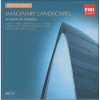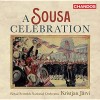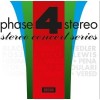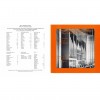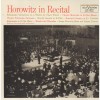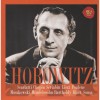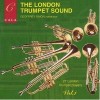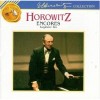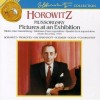Composers
John Philip Sousa
| Country: | United States Of America |
| Period: | Romantique |
John Philip Sousa (/ˈsuːsə/; November 6, 1854 – March 6, 1932) was an American composer and conductor of the late Romantic era, known particularly for American military and patriotic marches. Because of his mastery of march composition, he is known as "The March King" or the "American March King" due to his British counterpart Kenneth J. Alford also being known as "The March King". Among his best known marches are "The Washington Post", "Semper Fidelis" (Official March of the United States Marine Corps), and "The Stars and Stripes Forever" (National March of the United States of America).
His father was Portuguese, and his mother of Bavarian ancestry. Sousa began his career playing violin and studying music theory and composition under John Esputa and George Felix Benkert. His father eventually enlisted him in the United States Marine Band as an apprentice in 1868. After departing the band in 1875, Sousa eventually learned to conduct. From 1880 until his death, Sousa began focusing exclusively on conducting and wrote marches during this time. He eventually rejoined the Marine Band and served there for 12 years as director. Upon leaving the Marine Band, Sousa organized his own band. He toured Europe and Australia and also developed the sousaphone, a large brass instrument similar to the tuba. On the outbreak of World War I, Sousa was commissioned as a Lieutenant Commander and led the Naval Reserve Band in Illinois. Following his tenure there, Sousa returned to conduct the Sousa Band until his death in 1932.
John Philip Sousa was born in Washington, D.C., on November 6, 1854, to John Antonio Sousa and Maria Elisabeth Trinkhaus. He was of Portuguese and Bavarian descent.[2] Sousa started his music education by playing the violin as a pupil of John Esputa and George Felix Benkert (born 1831) for harmony and musical composition at the age of six. He was found to have absolute pitch. When Sousa reached the age of 13, his father, a trombonist in the Marine Band, enlisted his son in the United States Marine Corps as an apprentice to keep him from joining a circus band.
On December 30, 1879, Sousa married Jane van Middlesworth Bellis (1862–1944). They had three children together: John Philip, Jr. (April 1, 1881 – May 18, 1937), Jane Priscilla (August 7, 1882 – October 28, 1958), and Helen (January 21, 1887 – October 14, 1975). All are buried in the John Philip Sousa plot in the Congressional Cemetery. Wife Jane joined Daughters of the American Revolution (DAR) in 1907. Daughters Jane Priscilla and Helen Abert also joined DAR in 1907. Their Patriot was Adam Bellis.
Several years after serving his apprenticeship, Sousa joined a theatrical (pit) orchestra where he learned to conduct. He returned to the U.S. Marine Band as its head in 1880 and remained as its conductor until 1892. Sousa led "The President's Own" band under five presidents from Rutherford B. Hayes to Benjamin Harrison. Sousa's band played at two Inaugural Balls, those of James A. Garfield in 1881, and Benjamin Harrison in 1889.
Sousa organized his own band the year he left the Marine Band. The Sousa Band toured from 1892–1931, performing at 15,623 concerts.[5] In 1900, his band represented the United States at the Paris Exposition before touring Europe. In Paris, the Sousa Band marched through the streets including the Champs-Élysées to the Arc de Triomphe – one of only eight parades the band marched in over its forty years.[6] In 1911 they went to Australia and performed in Sydney and Melbourne (then the national capital).
The marching brass bass, or sousaphone, a modified helicon, was created by J. W. Pepper – a Philadelphia instrument maker who created the instrument in 1893 at Sousa’s request using several of his suggestions in its design. He wanted a tuba that could sound upward and over the band whether its player was seated or marching. The sousaphone was re-created in 1898 by C.G. Conn and this was the model that Sousa preferred to use.
Sousa lived in Sands Point, New York. A school (John Philip Sousa Elementary) and a band shell are named after him and there is also a memorial tree planted in nearby Port Washington. Wild Bank, his seaside house on Hicks Lane, has been designated a National Historic Landmark, although it remains a private home and is not open to the public.[7]
Sousa died of heart failure at the age of 77 on March 6, 1932, in his room at the Abraham Lincoln Hotel in Reading, Pennsylvania. He had conducted a rehearsal of "The Stars and Stripes Forever" the previous day with the Ringgold Band. He is buried in Washington, D.C.'s Congressional Cemetery.
Recently Added
| Country: | United States Of America |
| Period: | Romantique |
Biography
John Philip Sousa (/ˈsuːsə/; November 6, 1854 – March 6, 1932) was an American composer and conductor of the late Romantic era, known particularly for American military and patriotic marches. Because of his mastery of march composition, he is known as "The March King" or the "American March King" due to his British counterpart Kenneth J. Alford also being known as "The March King". Among his best known marches are "The Washington Post", "Semper Fidelis" (Official March of the United States Marine Corps), and "The Stars and Stripes Forever" (National March of the United States of America).
His father was Portuguese, and his mother of Bavarian ancestry. Sousa began his career playing violin and studying music theory and composition under John Esputa and George Felix Benkert. His father eventually enlisted him in the United States Marine Band as an apprentice in 1868. After departing the band in 1875, Sousa eventually learned to conduct. From 1880 until his death, Sousa began focusing exclusively on conducting and wrote marches during this time. He eventually rejoined the Marine Band and served there for 12 years as director. Upon leaving the Marine Band, Sousa organized his own band. He toured Europe and Australia and also developed the sousaphone, a large brass instrument similar to the tuba. On the outbreak of World War I, Sousa was commissioned as a Lieutenant Commander and led the Naval Reserve Band in Illinois. Following his tenure there, Sousa returned to conduct the Sousa Band until his death in 1932.
John Philip Sousa was born in Washington, D.C., on November 6, 1854, to John Antonio Sousa and Maria Elisabeth Trinkhaus. He was of Portuguese and Bavarian descent.[2] Sousa started his music education by playing the violin as a pupil of John Esputa and George Felix Benkert (born 1831) for harmony and musical composition at the age of six. He was found to have absolute pitch. When Sousa reached the age of 13, his father, a trombonist in the Marine Band, enlisted his son in the United States Marine Corps as an apprentice to keep him from joining a circus band.
On December 30, 1879, Sousa married Jane van Middlesworth Bellis (1862–1944). They had three children together: John Philip, Jr. (April 1, 1881 – May 18, 1937), Jane Priscilla (August 7, 1882 – October 28, 1958), and Helen (January 21, 1887 – October 14, 1975). All are buried in the John Philip Sousa plot in the Congressional Cemetery. Wife Jane joined Daughters of the American Revolution (DAR) in 1907. Daughters Jane Priscilla and Helen Abert also joined DAR in 1907. Their Patriot was Adam Bellis.
Several years after serving his apprenticeship, Sousa joined a theatrical (pit) orchestra where he learned to conduct. He returned to the U.S. Marine Band as its head in 1880 and remained as its conductor until 1892. Sousa led "The President's Own" band under five presidents from Rutherford B. Hayes to Benjamin Harrison. Sousa's band played at two Inaugural Balls, those of James A. Garfield in 1881, and Benjamin Harrison in 1889.
Sousa organized his own band the year he left the Marine Band. The Sousa Band toured from 1892–1931, performing at 15,623 concerts.[5] In 1900, his band represented the United States at the Paris Exposition before touring Europe. In Paris, the Sousa Band marched through the streets including the Champs-Élysées to the Arc de Triomphe – one of only eight parades the band marched in over its forty years.[6] In 1911 they went to Australia and performed in Sydney and Melbourne (then the national capital).
The marching brass bass, or sousaphone, a modified helicon, was created by J. W. Pepper – a Philadelphia instrument maker who created the instrument in 1893 at Sousa’s request using several of his suggestions in its design. He wanted a tuba that could sound upward and over the band whether its player was seated or marching. The sousaphone was re-created in 1898 by C.G. Conn and this was the model that Sousa preferred to use.
Sousa lived in Sands Point, New York. A school (John Philip Sousa Elementary) and a band shell are named after him and there is also a memorial tree planted in nearby Port Washington. Wild Bank, his seaside house on Hicks Lane, has been designated a National Historic Landmark, although it remains a private home and is not open to the public.[7]
Sousa died of heart failure at the age of 77 on March 6, 1932, in his room at the Abraham Lincoln Hotel in Reading, Pennsylvania. He had conducted a rehearsal of "The Stars and Stripes Forever" the previous day with the Ringgold Band. He is buried in Washington, D.C.'s Congressional Cemetery.

